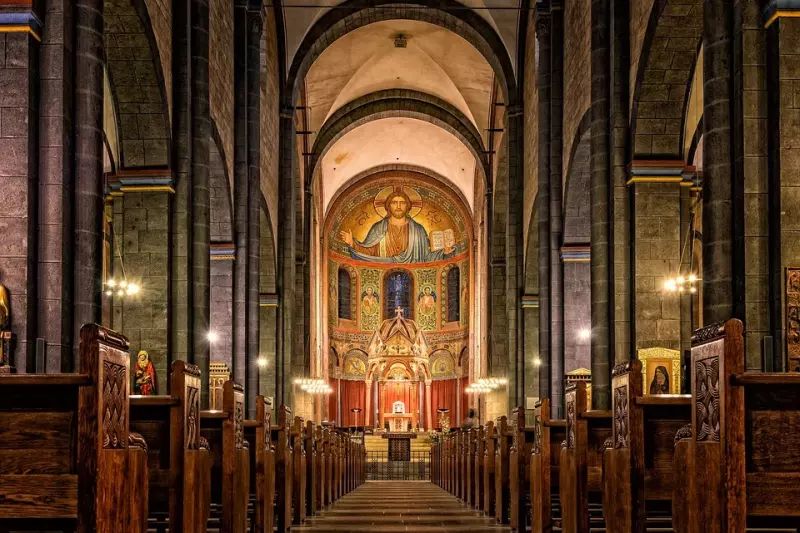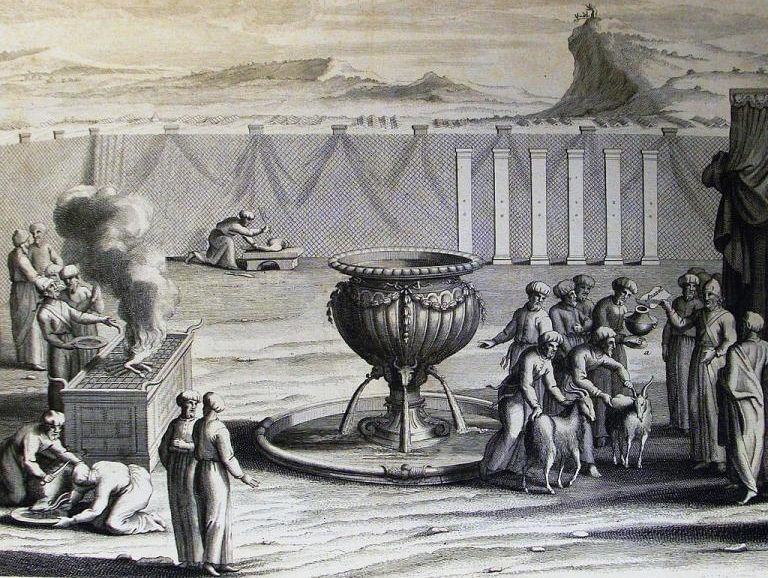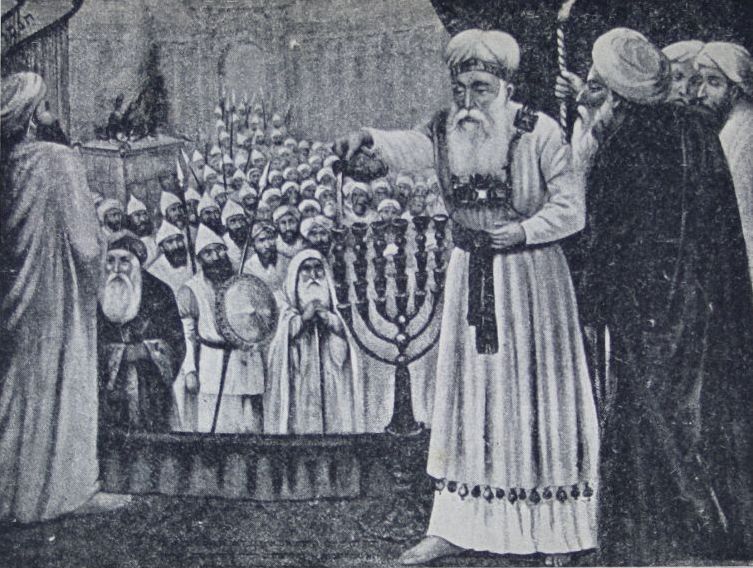The Feasts that begin the Liturgical Year
The first Sunday which begins the new liturgical year is known in Syriac as ‘Koodosh Eetho’ (Sanctification of the Church) and the following Sunday is known as ‘Hoodosh Eetho’ (Dedication of the Church). Both these Sundays have great significance and help us to prepare ourselves and our parishes to seek God’s blessings upon us as we enter another new year.
Koodosh Eetho
Sanctification Sunday (as it is otherwise known), marks the beginning of the Liturgical/Ecclesiastical calendar or year. The purpose of Koodosh Eetho is to ensure that all the faithful purify themselves and their parishes for the worship of God. This sanctification is both spiritual and physical. On the physical side, the priests, and the faithful labor hard to clean the physical church – the sanctuary – inside and out in order to cleanse the holy place and welcome the new year appropriately.
On the spiritual side, we remember that the clergy and the faithful are also the Church – the Body of Christ – and so we begin the new year with thanksgiving for the past year, and prayers for the new, asking the Holy Spirit to purify us so that we will be able to continue offering acceptable worship to the Almighty.
The term ‘sanctify’ means – to consecrate or to set apart and to make holy. So in the normal sense, it means to set apart or consecrate something for sacred purposes. But when we would use it in terms of ‘making holy’, it always refers to the sanctifying act of God because He alone is Holy, and He alone can sanctify and make anybody or anything holy.
Now the question is why should the Church be sanctified every year? After all, the Church is ‘the Body of Christ’1 and the ‘Temple of God’2 and so it is already sanctified by His divine presence within it. So then why an annual sanctification?
The answer can be found when we look at a feast of the Old Testament Church – Israel. The Feast of Atonement or Yom Kippur in the OT was a solemn day held every year, when all the Israelites would fast and prepare themselves, because that was when atonement sacrifices were made to sanctify both the people and the sanctuary.
God reminded His people that He is Holy and that since He was going to dwell in the Tabernacle, in their midst, they were to sanctify themselves – “Consecrate yourselves therefore, and be holy; for I am the Lord your God”3. And despite the fact that He dwelt among them, He also mandated that they sanctify themselves and the holy sanctuary every year during Yom Kippur so that He could continue dwelling among them.
So in the same way, Koodosh Eetho is a time of renewal annually for us. We know that we, being part of the Body of Christ, are called to be holy and sanctified – physically, spiritually, morally and ethically. Yet we acknowledge that as long as we continue in our earthly bodies, with our fallen natures, we continue to sin and so we will always require to be continually sanctified in order to have God’s presence dwelling among us permanently.
As we publically declare that we are set apart, we are not only acknowledging that we have been sanctified by the precious blood of Christ but that our Lord Jesus Christ continues to sanctify us through His grace, as we continue to walk in accordance to His Word and partake in the Sacraments of the Church, especially the Eucharist. We continually ask for His forgiveness through confession and penance for failing to walk in holiness, and renew our commitment to follow after the path that befits a sanctified community.
This is why we celebrate Koodosh Eetho or Sanctification Sunday.
Hoodosh Eetho
The Sunday that follows Koodosh Eetho is known as ‘Hoodosh Eetho’ (Dedication of the Church) or Dedication Sunday. After the physical and spiritual sanctification of the sanctuary and the faithful respectively, the Church members now prepare to rededicate themselves – mind, body and soul – to Christ.
The feast of Hoodosh Eetho has historical significance – it is connected to the Jewish Feast of Dedication4, which is also called ‘Hanukkah’5 or ‘Chanukah’. In around 170 BC the Syrian King Antiochus Ephiphanus invaded the city of Jerusalem and his armies caused great destruction there, massacring around 80,000 people. He also looted the Temple in Jerusalem and defiled it by sacrificing an unclean animal, a female swine, as an offering to pagan gods.
But the Scriptures record6 that the Jews recognized that God had allowed this to happen because of their sinfulness, and so they repented of their sins and returned to God. Later in 164 BC, when they succeeded in defeating their enemies under the leadership of Judas Maccabeus, they renovated and consecrated the desecrated temple, re-dedicating it for the worship of God. In commemoration of this act of rededication and as a mark of their joy in defeating their enemies, the Jews began celebrating this event as the Feast of Dedication every year by lighting candles and lamps continuously for the eight days, and so this feast is also known as the ‘Feast of lights’.
In the same way, the orthodox Christians also remember this event during the Feast of Hoodosh Eetho and renew their commitment to follow the Lord and walk in His ways and offer Him right worship in their sanctuaries. Like in the Feast of Lights, we remember that we are called by our Lord Jesus Christ who is the Light of the world, to be the lights that dispel the darkness of this sinful world and so we commit ourselves once again to keep ourselves away from sin and defilement so that we can continue to be witnesses of Christ to the world.
Significance of These Two Days
It may seem that Koodosh Eetho and Hoodosh Eetho are very similar but there is a difference between them. We must remember that there is a spiritual principle involved here. In the case of sacrifices and offerings, they were always purified first, and only then were they dedicated or offered to God. So on Koodosh Eetho, the Church is purified first and then on Hoodosh Eetho, the purified church is dedicated as a pure offering to the Lord, with the faithful renewing their commitment to walk in holiness.
Koodosh Eetho and Hoodosh Eetho are particularly significant in that they are just a month away from the Fast of the Nativity. So they help us to prepare for the Feast of the Nativity, so that we can get ready for the coming of our Savior, the Lord Jesus Christ, by sanctifying ourselves and rededicating our lives to living for God and His pleasure.
1 Col. 1:24
2 1 Cor 3:16
3 Lev. 19:2
4 This was observed even in our Lord Jesus’ time, as mentioned in John 10:22.
5 Hannukah is observed for eight days in mid or late November, around the same time as Hoodosh Eetho.
6 2 Maccabees 6:12-13



